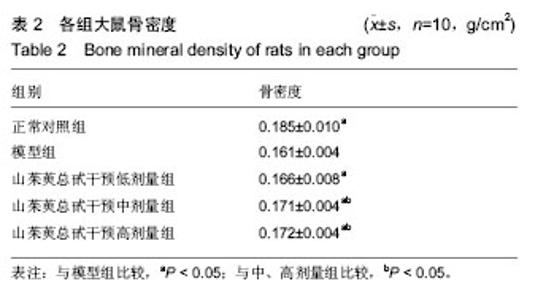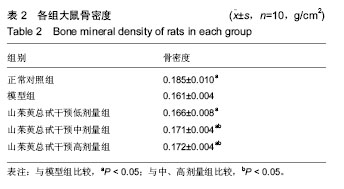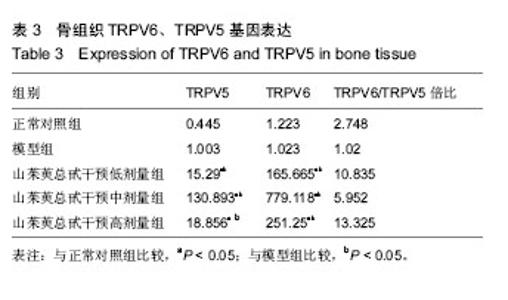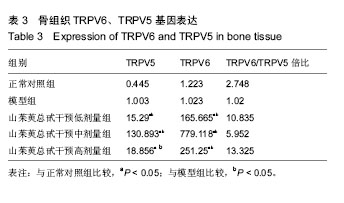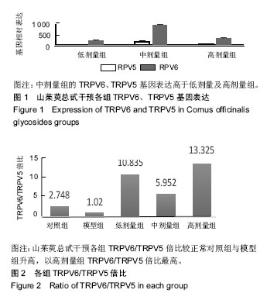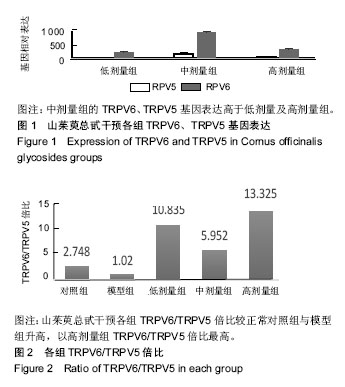| [1] 原发性骨质疏松症诊疗指南(2017) [J].中国实用内科杂志, 2018, 38(2):127-150.[2] CLAPHAM DE. TRP channels as cellular sensors. Nature. 2003; 426(6966):517-524. [3] Montell C, Birnbaumer L, Flockerzi V, et al. A unified nomenclature for the superfamily of TRP cation channels. Molecular Cell.2002;9(2): 229-231. [4] Shi DJ, Wang KW. The progress of TRP channels in structural studies. Sheng Li Ke Xue Jin Zhan. 2014;45(6):401-409. [5] Hoenderop JG, Nilius B, Bindels RJ. Molecular mechanism of active Ca2+ reabsorption in the distal nephron. Annu Rev Physiol. 2002;64:529-549. [6] Hoenderop JG, Vennekens R, Müller D, et al. Function and expression of the epithelial Ca(2+) channel family: comparison of mammalian ECaC1 and 2. J Physiol. 2001;537(Pt 3):747-761. [7] Müller D, Hoenderop JG, Meij IC, et al. Molecular cloning, tissue distribution, and chromosomal mapping of the human epithelial Ca2+ channel (ECAC1). Genomics. 2000;67(1):48-53. [8] Peng JB, Chen XZ, Berger UV, et al. Human calcium transport protein CaT1. Biochem Biophys Res Commun. 2000;278(2): 326-332. [9] van de Graaf SF, Boullart I, Hoenderop JG, et al. Regulation of the epithelial Ca2+ channels TRPV5 and TRPV6 by 1alpha, 25-dihydroxy Vitamin D3 and dietary Ca2+ J Steroid Biochem Mol Biol. 2004;89-90(1-5):303-308. [10] KIM M H, LEE G S, JUNG E M, et al. The negative effect of dexamethasone on calcium-processing gene expressions is associated with a glucocorticoid-induced calcium-absorbing disorder. Life Sci. 2009;85(3-4):146-152. [11] Van Cromphaut SJ, Stockmans I, Torrekens S, et al. Duodenal calcium absorption in dexamethasone-treated mice: functional and molecular aspects. Arch Biochem Biophys.2007;460(2): 300-305. [12] Weber K, Erben RG, Rump A,et al. Gene structure and regulation of the murine epithelial calcium channels ECaC1 and 2. Biochem Biophys Res Commun.2001;289(5):1287-1294.. [13] 郭清河,叶添文.TRPV5/TRPV6调节骨代谢作用的研究进展[J].中国矫形外科杂志,2011,19(23):1976-1978.[14] 周京华,李春生,李电东.山茱萸有效化学成分的研究进展[J].中国新药杂志,2001,10(11):808-812.[15] 李晶.针灸及山茱萸总甙对去势大鼠骨代谢影响的生化研究[D].天津:天津中医学院,2004.[16] Diederichs S, Freiberger F, van Griensven M. Effects of repetitive and short time strain in human bone marrow stromal cells. Journal of biomedical materials research Part A.2009;88(4):907-915. [17] Hoenderop JG, van Leeuwen JP, van der Eerden BC, et al. Renal Ca2+ wasting, hyperabsorption, and reduced bone thickness in mice lacking TRPV5. J Clin Invest. 2003;112(12):1906-1914. [18] van der Eerden BC, Hoenderop JG, de Vries TJ, et al. The epithelial Ca2+ channel TRPV5 is essential for proper osteoclastic bone resorption. Proc Natl Acad Sci U S A. 2005; 102(48): 17507-17512. [19] 车明学,谷贵山,李福春.新型钙离子通道TRPV5在骨质疏松症发病机制中的作用[J].中国老年学杂志,2007,27(17):1732-1734.[20] Walters JR, Balesaria S, Chavele KM,et al. Calcium channel TRPV6 expression in human duodenum: different relationships to the vitamin D system and aging in men and women. J Bone Miner Res. 2006;21(11):1770-1777. [21] Barthel TK, Mathern DR, Whitfield GK, et al. 1, 25-Dihydroxyvitamin D3/VDR-mediated induction of FGF23 as well as transcriptional control of other bone anabolic and catabolic genes that orchestrate the regulation of phosphate and calcium mineral metabolism. J Steroid Biochem Mol Biol.2007;103(3-5): 381-388. [22] 李福春.TRPV5/TRPV6对大鼠骨髓间充质干细胞成骨分化及成骨细胞信号传递的影响[D].长春:吉林大学,2008.[23] 那键.雌激素、维生素D_3对雌性大鼠成骨细胞增殖及钙通道TRPV5/TRPV6表达的影响[D]. 长春:吉林大学,2009.[24] 叶贤胜.中药山茱萸的化学成分和生物活性研究[D].北京:北京中医药大学,2017.[25] 郭富礼,张振凌,王洪波.不同山茱萸炮制品中熊果酸含量的比较 [J].时珍国医国药,2002,13(7):404-405.[26] 刘洪,许惠琴.山茱萸及其主要成分的药理学研究进展[J].南京中医药大学学报(自然科学版) ,2003,19(4):254-256.[27] 张兰桐,任雷鸣,温进坤.山茱萸提取液抗心律失常有效部位的研究[J].中草药,2001,32(11):47-50.[28] 刘倩,范颖,姜开运,等 山茱萸潜在功能的发掘与利用[J].时珍国医国药,2015,26(11):2764-5.[29] 陈涛.山茱萸水提液对骨质疏松模型小鼠骨形态学影响[J].天津药学, 2003,15(4):5-6+32.[30] 李平,李晶,王惠明.山茱萸总苷对去势大鼠骨代谢和骨密度影响的实验研究[J].天津中医药,2007,24(4):315-317.[31] 李晶,王惠明,李平.山茱萸总苷对去势大鼠骨代谢影响的生化研究[J].辽宁中医杂志,2007,34(10):1480-1482.[32] 李晶,武峻艳,王慧明,等.山茱萸总苷对去势大鼠骨组织形态学影响的实验研究[J].上海中医药杂志,2010,44(1):69-72.[33] 王艳,宋春静,孙秀岩,等.山茱萸总苷及其含药血清对MSCs增殖的影响[J].天津中医药大学学报,2013,32(2):101-104.[34] 章晓云,夏天,陈跃平,等.Zip1转染骨髓间充质干细胞对Wnt1/β- catenin信号成骨通路的影响[J].中国骨质疏松杂志, 2018,24(5): 594-599.[35] 李庆帆,王佐林.ALP、Runx2及OCN在大鼠拔牙后牙槽骨来源BMSCs中的表达[J].口腔颌面外科杂志,2017,27(2):77-82.[36] Saville PD, Lieber CS. Effect of alcohol on growth, bone density and muscle magnesium in the rat. J Nutr.1965;87(4):477-484. [37] 翁世芳,黄克,王洪复.大鼠骨密度测定在骨质疏松模型研制中的应用[C].西安:proceedings of the 第三届全国骨质疏松研讨会, 1994.[38] 周丽,邓伟民.去势雌性大鼠动物模型在绝经后骨质疏松症中的应用[J].中国组织工程研究与临床康复,2008,12(7):1323-1326.[39] Rodgers JB, Monier-Faugere MC, Malluche H. Animal models for the study of bone loss after cessation of ovarian function. Bone. 1993;14(3):369-377. [40] Hellwig N, Albrecht N, Harteneck C, et al. Homo- and heteromeric assembly of TRPV channel subunits. J Cell Sci. 2005;118(Pt 5): 917-928. [41] Nilius B, Prenen J, Hoenderop JG, et al. Fast and slow inactivation kinetics of the Ca2+ channels ECaC1 and ECaC2 (TRPV5 and TRPV6). Role of the intracellular loop located between transmembrane segments 2 and 3. J Biol Chem.2002; 277(34):30852-30858. [42] Vennekens R, Hoenderop JG, Prenen J, et al. Permeation and gating properties of the novel epithelial Ca(2+) channel. J Biol Chem.2000;275(6):3963-3969. [43] Sternfeld L, Anderie I, Schmid A, et al. Identification of tyrosines in the putative regulatory site of the Ca2+ channel TRPV6 . Cell calcium.2007;42(1):91-102. [44] Zheng W, Hu R, Cai R, et al. Identification and characterization of hydrophobic gate residues in TRP channels. FASEB J. 2018; 32(2):639-653. [45] Xie H, Cui Z, Wang L, et al. PDGF-BB secreted by preosteoclasts induces angiogenesis during coupling with osteogenesis. Nat Med. 2014;20(11):1270-1278. |
